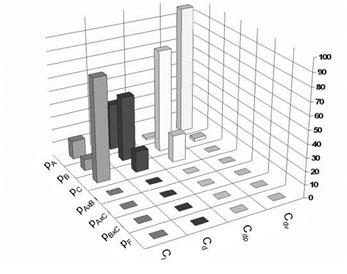Summary and Conclusion
In the described studies CFD settings are systematically varied by using a minimum number of simulations to quantify the relative impact of several numerical and geometrical parameters on the CFD result. The Taguchi method is applied to reduce the number of simulations in comparison to a full parameter variation. Statistical analysis (ANOVA) gave informations about the relative parameter influence on the CFD results like lift and drag. It also gives information on interactions between different parameters and their influence on the result. During the studies steady and unsteady test cases are performed and in both cases the results reflect long lasting experiences in CFD simulation. It is also shown that the results achieved by the
|
Fig. 12 Results of run 8. A = Reynolds number, B = Mach number, C = angle of attack |
Taguchi method are robust to stronger variations of all parameters. This makes the results more generally valid, at least as long as the parameters are not varied too strongly. Therefore, the performed study shows that the Taguchi method is a suitable systematic method to check the accuracy of CFD simulations. To reduce the effort even more the Taguchi-Method was implemented into the TAU code via Python scripts. The scripts support the user during the selection of the Taguchi matrix and setup automatically all necessary TAU input files and folders.
References
[1] AR-138, Experimental Data Base for Computer Program Assessment, ch. A6-1 (1979)
[2] Klein, B.: Versuchsplanung-DOE: Einfuhrung in die Taguchi/Shainin-Methodik, 2nd edn., Oldenburg
[3] Blasing J. P. (Hrsg.): Workbook DoE, Design of Experiments nach G. Taguchi, TQU
[4] Roos, P. J.: Taguchi Techniques for Quality Engineering. 2. McGraw-Hill, Auflage
[5] Hering, Triemel, Blank: Qualitatssicherung fur Ingenieure. VDI Verlag
[6] Lutz, T., Sommerer, A., Wagner, S.: Parallel Numerical Optimisation of Adaptive Transonic Airfoils. In: Fluid Mechanics and its Applications, vol. 73. Kluwer Academic Publishers












